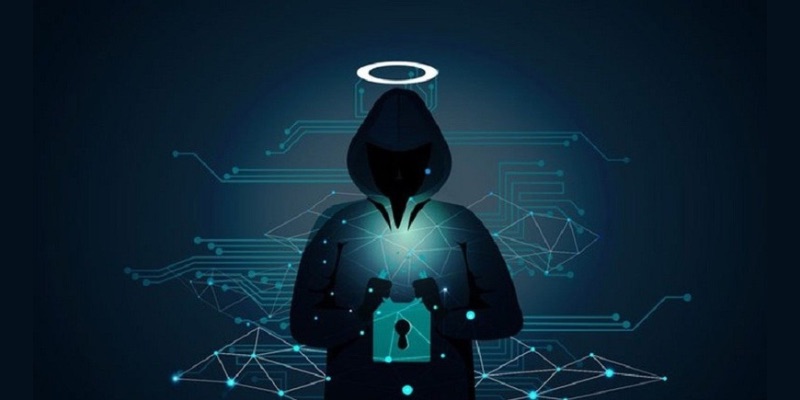Why Cybersecurity Starts in the C-suite?
September 21, 2023, 5 min read
In this day and age of digital transformation and escalating cyber threats, it is of the utmost necessity for businesses all over the world to implement advanced cybersecurity measures. Although there is a strong temptation to place sole responsibility for cybersecurity in the hands of an organization’s IT department, the most effective safeguards are those devised and put into place by senior management. The significance of cybersecurity for company leaders, the multiple duties played by executives, and the reasons why cybersecurity measures should begin at the top of the organization.
Why Cybersecurity Starts in the C-suite?
The C-suite, which is comprised of top executives such as the Chief Executive Officer (CEO), Chief Financial Officer (CFO), Chief Technology Officer (CTO), and Chief Marketing Officer (CMO), and Chief Information Security Officer (CISO), plays a vital role in assuring the cybersecurity posture of an organization. This is why:
1. Culture
The tone of an organization is established by its leaders. Leading by example is one of the most essential principles in every organization. When the executive leadership of a firm places a high priority on cybersecurity, it conveys to the rest of the organization that security is an issue that affects the entire organization and not just the information technology department.
2. Allocation of Resources
The CFO and CEO are primarily responsible for determining the amount of resources that should be allocated to various cybersecurity efforts. For the successful implementation of robust security measures, such as firewalls, intrusion detection systems, and employee training programmes, it is essential to ensure that appropriate financing is available.
3. Risk Management
The C-suite is accountable for analyzing risks and developing strategies to reduce or eliminate them. Cyber Threats pose a substantial danger to an organization’s operations, as well as its reputation and financial security. In order to keep the organization resilient in the face of cyberattacks, it is vital to identify the risks that it faces and then take steps to address those risks.
4. Compliance and Legislation
It is the responsibility of the leaders of an organization to ensure that it conforms with the cybersecurity legislation and standards that are applicable to their sector. If the organization faisl to comply, there might be monetary fines and other legal repercussions.
5. Management of Reputation
The reputation of a firm can be damaged in an instant by a data breach that occurs online. Rebuilding confidence with customers, partners, and shareholders depends on how the executives in charge of the company respond to the aftermath of a data breach.
CFO to CMO – How the C-suite Plays a Role
When it comes to improving an organization’s cybersecurity posture, each member of the executive team has a distinct purpose:
1. Chief Executive Officer (CEO)
The culture and direction of the company are determined by the CEO. The CEO needs to ensure that the topic of cybersecurity will continue to be at the top of the company’s to-do list by advocating for it as a strategic priority.
2. Chief Financial Officer (CFO)
The CFO is responsible for overseeing budgeting and resource allocation. They are obligated to make certain that initiatives pertaining to cybersecurity acquire the necessary funds and give investment priorities to those that safeguard the organization’s monetary holdings.
3. Chief Technology Officer (CTO)
The Chief Technology Officer is in charge of implementing technical solutions to protect the company’s data and infrastructure. They collaborate closely with the Chief Information Security Officer (CISO) to create and implement cybersecurity strategy and solutions.
4. CMO
The Chief Marketing Officer (CMO) contributes to the organization’s cybersecurity efforts by informing clients and business associates about the precautions taken by the company. They are also required to take into consideration the potential impact that cybersecurity events could have on the image of the business and the communication techniques used.
5. Chief Information Security Officer (CISO)
The Chief Information Security Officer (CISO) is the organization’s dedicated cybersecurity specialist who advises the C-suite and controls the organization’s security policies, processes, and incident response plans.
Why is Cybersecurity Important for Business Executives?
Cybersecurity is not just a technical concern; it’s a business imperative for executives for several reasons:
1. Protecting Data
Businesses store vast amounts of sensitive data, including customer information and proprietary data. Breaches can lead to data loss, regulatory fines, and legal liabilities.
2. Business Continuity
Cyberattacks can disrupt operations, leading to revenue loss and damage to customer relationships. A robust cybersecurity strategy ensures business continuity.
3. Legal and Regulatory Compliance
Failing to meet cybersecurity regulations can result in legal consequences and damage to an organization’s reputation.
4. Reputation Management
A breach can tarnish a company’s reputation, impacting customer trust and shareholder confidence. Executives must be prepared to manage these consequences.
5. Competitive Advantage
Demonstrating strong cybersecurity practices can be a competitive advantage, attracting customers who prioritize data security.
Where Does Cybersecurity Start?
The top executives of an organization must first make the decision to put cybersecurity at the top of their priority list and invest in it. It takes a holistic approach, which includes things like the following:
Education entails making certain that members of the C-suite have an understanding of the ever-changing nature of cyber threats and the possible impact these threats could have on the organization.
In the context of information security, “risk assessment” refers to the process of identifying and assessing potential threats in order to arrive at well-informed judgements regarding resource allocation and mitigation techniques.
Culture of Security
Creating and promoting a culture of security throughout the entire organization, with executives setting the tone and serving as role models.
Investing in technology means putting in place the appropriate cybersecurity tools and procedures in order to provide adequate protection for digital assets.
Developing and testing incident response strategies in order to minimize harm in the event that a breach occurs is part of the incident response process.
Conclusion
Information technology departments are no longer the only ones responsible for cybersecurity. It all begins in the executive suite, where decisions on culture, resource distribution, and ownership of the responsibility of defending the digital stronghold of the organization are made.
Businesses may better defend themselves in a world that is increasingly digital and interconnected if they acknowledge the crucial role that the C-suite plays in cybersecurity and take appropriate action.




























